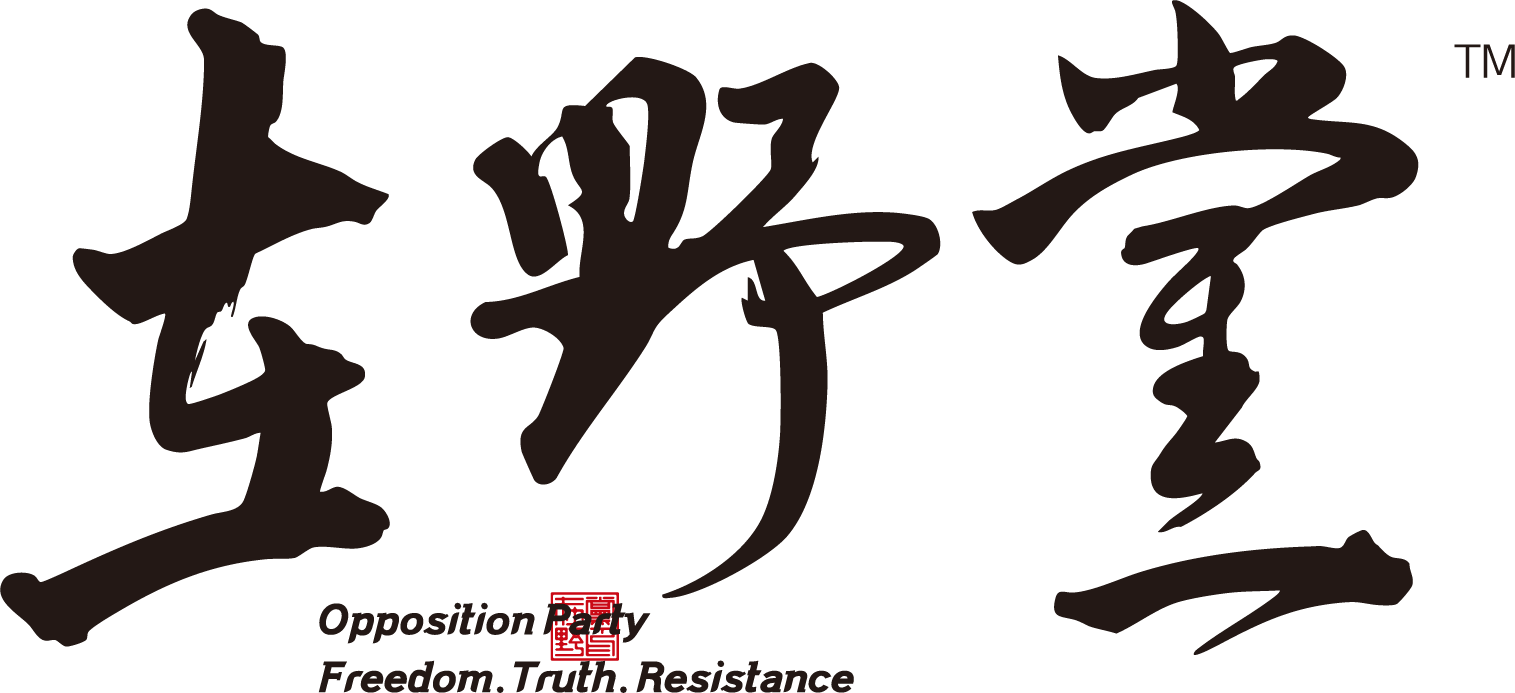The Road to Reconstruction: Farewell to the Illusion of the CCP, Toward a Free China
文/陆乾坤 编辑:冯仍 责任编辑:罗志飞 鲁慧文 翻译:鲁慧文
2025年7月,美国哈德逊研究所发布了一份不同寻常的战略报告:《中共之后的中国——为后极权时代做准备》。主笔余茂春教授与其团队,并没有将目光局限于当前中共政权的危机表现,而是超前一步,思考中国如何从极权体制中走出,并完成民主重建。它并非危言耸听的政治预言,而是一份基于历史经验与现实危机的 “民主转型剧本” 。
它提出一个核心判断:中共政权的垮台不是“是否”,而是“何时”。更关键的是,崩塌不会以可控的、渐进的方式展开,而可能如苏联解体、柏林墙倒塌那样,突然发生、一夜之间。
一、中共不是国家本身
报告首先明确区分了“中共政权”与“中国国家”的本质区别。在过去的几十年里,中共将“党”与“国家”捆绑为一体,使无数国人误以为批评中共就是“反国家”,反独裁就是“乱中国”。
但现实是:中共的统治早已成为中国发展与社会进步的最大障碍。经济结构失衡、房地产泡沫破裂、青年失业率高企、地方财政入不敷出;同时,言论禁锢、司法操控、宗教打压、人心离散,空有体量却丧失动力的机器 ,仅靠维稳与洗脑维持表面秩序。
这正是报告所揭示的“虚假强大”:一个表面团结的政权,在内在已然分裂瓦解;一个庞大的社会,却长期由“未成年政治人格”(缺乏制衡、情绪化决策)操控的中央权力所主导,形成所谓“大社会、小朋友政府”的病态结构。
二、崩塌之后的第一个清晨
报告中提出,美国并不准备以“胜利者姿态”干预中国,而是制定了三阶段的“低可见度参与”方案。首先,是派遣情报人员与特种部队在政权真空出现的第一时间进入关键地区,如北京、上海、广州、成都等,确保战略通信畅通、核设施安全、边境口岸有序。
但这些小规模军事与外交行动,不是为了接管中国,而是为了在混乱初期防止恐慌蔓延,保护民众安全,并寻找地方可信力量建立过渡政权。
报告特别强调“分区接触策略”:即在中国各地自然形成地方自治政权后,不急于重建中央政府,而是容许地方多样化治理,逐步建立从下而上的联邦机制。
这意味着未来中国的转型,并非一蹴而就的“换朝代”,而是一场复杂的国家重构工程。这也是报告强调的:美国在其中的角色,更像“助产士”而非“接管者”。
三、五项民主重建核心工程
为了避免出现“后中共混乱”,报告为中国民主化制定了五项战略工程:
1. 言论与媒体自由的建立
终结新华社、央视与各级宣传部门对信息的控制,设立临时独立媒体平台“Voice of China(中国之声)”,在过渡期提供多元、透明的新闻来源,为全国各地自治力量提供信息互联支持。
2. 民间社会的复兴
取消对非政府组织、宗教团体、地方社群组织的打压,赋予其合法注册地位。报告认为,民间组织网络是社会稳定与恢复治理能力的根基,应鼓励社会自组织能力在地方生长。
3. 教育与司法改革
废除政治洗脑式教材,恢复历史事实教育、世界公民教育与独立思考能力。司法体系则彻底脱离党领导,建立现代法治系统,推进陪审团制度、法官遴选制度、宪法法院建设。
4. 宗教与文化自由
报告特别指出,宗教信仰是抗击极权、重建精神信任的天然力量,也是中共统治下首当其冲的打压对象之一。必须归还被没收的宗教场所,让被流放的宗教领袖回归,全面取消宗教审批制度,保障信仰自由。
5. 宪政民主与制宪大会
通过“全国制宪大会”制定新宪法。宪法需包含多党竞争、新闻自由、司法独立、人权保障等条款,草拟新宪法的过程,必须全民参与,不得由任何“强人”闭门操刀。
四、台湾:镜子、伙伴与共同未来
报告的视野不仅限于大陆内部,也将台湾纳入“后中共中国”的重建蓝图之中,但其定位并非传统的“统一对象”,而是“民主的伙伴”与“制度的镜子”。
台湾的历史经验,尤其是从蒋氏专政到民主宪政的和平转型,已成为华人社会中唯一成功的民主范例。报告建议,未来民主中国应以平等、合作、互尊的方式与台湾展开对话。
台湾可以派出经验丰富的法治专家、公民社会组织者、地方治理顾问,协助大陆在重建早期建立地方自治机制与转型正义框架。
更重要的是,报告主张在新宪法制定时,应讨论与台湾之间的“邦联”关系可能性,或至少承认台湾的政治自主性,而非再次滑入民族主义的“统一”幻象。
最令人振奋的一幕将是:在北京的制宪会场上,台湾代表与大陆各地民选代表并肩而坐,共同决定新中国的制度基石——这不是“收复”与“被收复”,而是文明的共建、命运的同行。
五、中国民主党的角色与历史使命
在这一场未来重建的伟大工程中,中国民主党责无旁贷。
作为中国最早公开主张结束一党专政、实行宪政民主的反对党组织,中国民主党早已预见到中共政权的末路。我们在海内外广泛布局,聚集了大量拥有专业知识、政治理想、行动经验的成员,为中国的制度重构提供智力与人力支撑。
我们清楚,这场转型无法依赖“外力接管”,也不能寄望于“宫廷政变”,必须依靠中国人民的觉醒。也只有组织起来的觉醒,才能构成历史的推力。
因此,民主党当前的工作重点是:
1、建立面向全国的“宪政预备平台”,汇聚各地民主人士与地方社团,共同参与未来制宪大会准备;
2、筹建“自由中国智库”,为过渡期的司法、教育、治理、媒体等系统提供政策蓝图;
3、组建“地方联络协调机制”,一旦中共崩塌,能第一时间与各地自然形成的地方自治力量对接;
4、推动“历史正义与社会宽和”进程,呼吁设立“真相与和解委员会”,让中共时代的压迫不被遗忘,但避免复仇与内战重演。
我们的愿景,是建设一个不再被党控制的中国,一个真正属于人民的共和国。
我们的底线,是非暴力、非报复、非复辟。
我们的目标,是在中国土地上,建立自由、民主、人权、法治与联邦自治并存的现代文明国家。
六、我们准备好了吗?
报告虽然详尽,但它也提出一个无声的疑问:
我们中国人,准备好承担自由的责任了吗?
准备好在没有中央命令的情况下,自己组织、协商、共治吗?
准备好接受多元舆论、包容异见,而不是再寻求一个“新领袖”替我们做决定?
准备好承认台湾存在的现实,并把统一口号转化为协作愿景?
如果答案尚未明确,那就意味着我们要现在开始准备。我们在海外的民主运动,不应只是宣传与揭露,更要成为制度模拟与人才培育的预演场。
我们要建构民间议会、法律实验室、媒体平台、公民教育课程,提前演练自由治理,为未来储备制度与人才。
七、结语:历史的黄河,终将入海
《中共之后的中国》报告最后引用《河殇》的意象:黄河终将入海,黄土与蓝波交汇,沉积新生土地。
我们终将告别那条闭塞、内向、以苦难为荣的黄河,奔向象征自由、包容、向外延展的蔚蓝海洋过去两个世纪,中国曾试图迈入现代世界,却在中共的极权魔咒中走入歧途。但历史不会永远冻结,极权会崩溃,自由会回归。中共不是中国,独裁不是命运。
我们,成为唤醒自由中国第一道曙光的先行者。
愿中国民主党,成为那条引导黄河入海的桥梁与灯塔。
原文引用:China after Communism: Preparing for a Post-CCP China https://www.hudson.org/politics-government/china-after-communism-preparing-post-ccp-china-miles-yu
2025年7月
The Road to Reconstruction: Farewell to the Illusion of the CCP, Toward a Free China
By Lu Qiankun | Edited by Feng Reng | Chief Editors: Luo Zhifei, Lu Huiwen | Translated by Lu Huiwen
In July 2025, the Hudson Institute in the United States released a groundbreaking strategic report titled “China After Communism: Preparing for a Post-CCP China.” Authored by Professor Miles Yu and his team, the report does not merely focus on the ongoing crises under the current Chinese Communist Party (CCP) regime but takes a step ahead to consider how China can emerge from authoritarian rule and achieve democratic reconstruction. This is not a sensational political prediction, but a “blueprint for democratic transition” grounded in historical lessons and present realities.
At the heart of the report lies a core judgment: the collapse of the CCP regime is not a matter of “if,” but “when.” More importantly, it asserts that the collapse is unlikely to be controlled or gradual, but may occur suddenly and unexpectedly—like the fall of the Berlin Wall or the dissolution of the Soviet Union.
I. The CCP Is Not the Chinese Nation
The report first draws a clear distinction between the CCP regime and the Chinese nation. For decades, the Party has deliberately fused “Party” and “state,” leading many Chinese citizens to mistakenly equate criticism of the CCP with being “anti-China,” or to believe that opposing dictatorship means destabilizing the country.
In truth, the CCP has long become the greatest obstacle to China’s development and social progress. Economic imbalance, the collapse of the real estate bubble, soaring youth unemployment, and widespread local government debt plague the system. Simultaneously, there is censorship of speech, manipulation of justice, religious repression, and growing public disillusionment. What remains is a giant but stagnant machine sustained only by propaganda and surveillance.
The report refers to this as “illusory strength”: a seemingly unified regime that is internally fragmented; a vast society governed by an emotionally reactive and unbalanced central power structure—a “big society ruled by a childish government.”
II. The First Morning After Collapse
The report outlines that the United States does not intend to intervene as a “victor” in post-CCP China but instead proposes a three-phase “low-visibility involvement” strategy. First, intelligence and special forces would be dispatched at the earliest moment of regime collapse to key areas—Beijing, Shanghai, Guangzhou, Chengdu—to ensure strategic communications, protect nuclear facilities, and maintain border order.
These limited military and diplomatic operations are not to take control, but to prevent mass panic, safeguard civilians, and identify local trustworthy forces to form a transitional authority.
A key concept introduced is the “zonal engagement strategy”: after the natural emergence of localized autonomous governments across China, the focus would not be on rapidly restoring a central regime, but rather on encouraging regional diversity and bottom-up formation of a federal structure.
Thus, China’s transition would not be a mere “dynastic change” but a complex national reconstruction project. The report stresses that America’s role should be that of a midwife, not a caretaker.
III. Five Pillars of Democratic Reconstruction
To avoid post-collapse chaos, the report lays out five strategic projects for China’s democratic rebuilding:
1. Freedom of Speech and Independent Media
Dismantle control by Xinhua News Agency, CCTV, and propaganda departments. Establish an interim, independent media platform—“Voice of China”—to offer transparent, pluralistic news sources during the transitional period and link autonomous regions.
2. Revival of Civil Society
End repression of NGOs, religious groups, and community organizations. Grant legal status to these entities. The report views grassroots networks as the foundation of stable governance and advocates for the growth of local self-organization.
3. Educational and Judicial Reform
Can we tolerate diverse voices and accept dissent, instead of relying on another “strongman” to decide for us?
Can we recognize the political reality of Taiwan and transform calls for unification into visions of cooperation?
If not, then we must begin preparing now.
The overseas democracy movement must move beyond denunciation and exposure and become a rehearsal ground for future governance.
We must build people’s assemblies, legal laboratories, media platforms, and civic education programs—to simulate freedom, train talent, and store up institutional resources for tomorrow.
VII. Conclusion: The Yellow River Will Reach the Sea
The report ends by quoting imagery from River Elegy (He Shang): “The Yellow River will eventually reach the sea.” Yellow silt and blue waves shall converge to form new land.
We shall finally say goodbye to that closed, inward, suffering-glorifying Yellow River—and rush toward the vast ocean that symbolizes freedom, openness, and the outward gaze.
Over the past two centuries, China has tried many times to join the modern world, only to be diverted into authoritarian darkness under the CCP. But history cannot be frozen forever. Tyranny will collapse. Freedom will return. The CCP is not China. Dictatorship is not destiny.
Let us become the first rays of dawn that awaken a free China.
May the China Democracy Party be the bridge and beacon that guides the Yellow River to the sea.
Original Source:
China After Communism: Preparing for a Post-CCP China
Hudson Institute, July 2025
https://www.hudson.org/politics-government/china-after-communism-preparing-post-ccp-china-miles-yu




